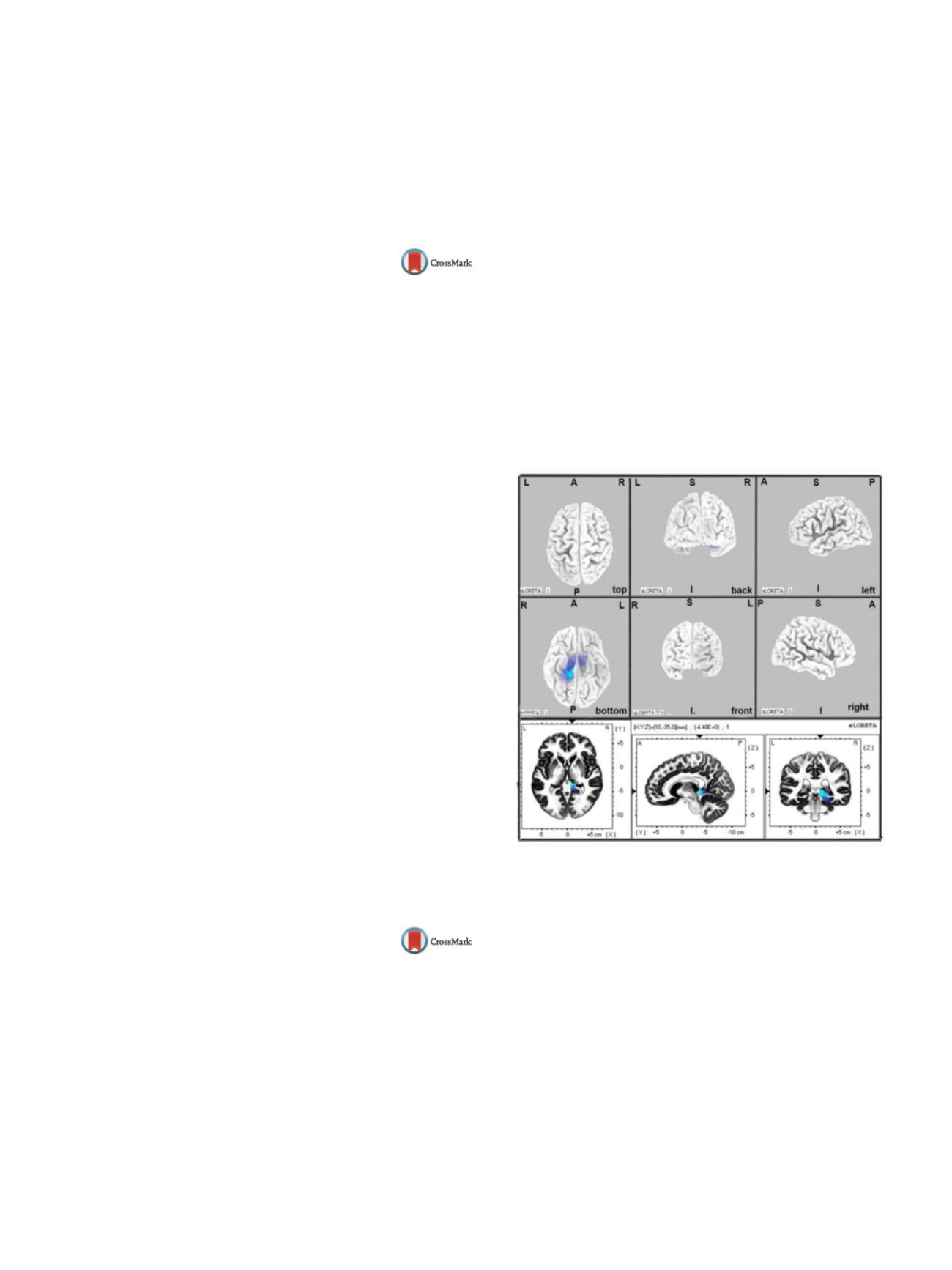

25th European Congress of Psychiatry / European Psychiatry 41S (2017) S170–S237
S171
Reference
[1] Paller KA, Creery JD, Florczak SM, Weintraub S, Mesulam M-
M, Reber PJ, et al. Benefits of mindfulness training for patients
with progressive cognitive decline and their caregivers. Am J
Alzheimer’s Dis Other Dementias [Internet] 2014 Aug 25 [cited
2014 Nov 6].
http://dx.doi.org/10.1016/j.eurpsy.2017.01.2062EW0193
Economic recession and mental
health distress: Does age matter?
D. Frasquilho
∗
, G. Cardoso , A. Ana , M. Silva ,
J.M. Caldas-de-Almeida
Cedoc, Chronic Diseases Research Center, Nova Medical School,
Universidade Nova de Lisboa, Lisboa, Portugal
∗
Corresponding author.
Introduction
The association between economic crises and men-
tal health problems can be attributed to a number of factors. Among
these, age seems to be an important determinant.
Objectives
The aim of this study was to assess whether mental
health of the Portuguese population following the onset of the 2008
recession, differs by age groups.
Methods
A follow-up study (2015) on the population aged 18 to
> 65 years old, using the National Mental Health Survey (
n
= 911).
The age-group prevalence of mental health distress assessed by the
ten-itemKessler’s Psychological Distress Scale (K10)was calculated
using Chi
2
statistics and mental distress as a categorical variable
(
P
< 0.05).
Results
Mean mental distress score differed significantly accord-
ing to age group,
2
(3) = 10.684,
P
< = 0.05. The results showed
that the older groups (50–64 and 65 = years old) were more fre-
quently under mental distress (17–19%) compared to younger
people (18–49 = years old), which were less likely to report being
distressed (8–12%).
Conclusions
Age seems to be an important determinant of dis-
tress levels during the economic crisis in Portugal. Older adults
reported to be more distressed compared to younger individuals.
There are several hypotheses for a differential expression of psy-
chological distress between age groups such as working status
and retirement, which can express differential access to coping
resources under such contextual negative pressure of economic
recession. Further research on age groups is thus needed to bet-
ter understand how recession generates adverse effects on mental
well-being.
Keywords
Distress; Age; Mental health; Recession; Older adults
Disclosure of interest
The authors have not supplied their decla-
ration of competing interest.
http://dx.doi.org/10.1016/j.eurpsy.2017.01.2063EW0194
The effect of apolipoprotein E 4
(APOE E4) on visuospatial working
memory in healthy elders and
amnestic mild cognitive impairment
patients: An event-related potentials
study
L. Gu
Nanjing Zhongda Hospital, Southeast University, School of Medicine,
Department of Neuropsychiatry, Nanjing, China
Introduction
Previous studies provided inconsistent evidences
for the effect of apolipoprotein E 4 (APOE 4) status on the
visuospatial working memory (VSWM). Our study was the first
investigation with event-related potential (ERP) to explore the
effect of APOE 4 on VSWM in healthy elders and aMCI patients.
Objective
The aim was to investigate the effect of APOE 4 on
VSWM with event-related potential (ERP) study in healthy elders
and aMCI patients.
Methods
Thirty-nine aMCI patients (27 APOE 4 non-carriers and
12 APOE 4 carriers) and 43 their matched control (25 APOE 4
non-carriers and 18 APOE 4 carriers) performed an N-back task,
a VSWM paradigm that manipulated the number of items to be
stored in memory.
Results
Our study detected reduced accuracy and delayed mean
correct response time in aMCI patients than healthy elders. P300
was elicited by VSWMand its amplitudewas lower in aMCI patients
at the central-parietal and parietal electrodes than healthy controls.
In healthy elders, P300 amplitude declined prior to task perfor-
mance change in APOE 4 carriers than non-carriers. Regarding
aMCI patients, P300 amplitude result revealed exacerbated VSWM
deficits inAPOE 4 carriers thanAPOE 4 non-carriers. Additionally,
standardized low-resolution brain electromagnetic tomography
analysis (s-LORETA) result showed enhanced brain activation in
right parahippocampal gyrus during P300 time range in APOE 4
carriers than non-carriers in aMCI patients
( Fig. 1 , T ables 1 and 2 ).Conclusions
It demonstrated that P300 amplitude might serve as
a biomarker for recognizing aMCI patients and contribute to early
detection of worse VSWM in APOE 4 carriers than non-carriers.
Fig. 1
The sLORETA images showing statistical differences
between aMCI– APOE 4
−
and aMCI– APOE 4+ group (3D-view
and slice-view) in the P300 time-range. The three slice-view images
below located the maximal difference between aMCI– APOE 4
−
and aMCI– APOE 4+ group (MNI coordinates
x
,
y
,
z
= 10,
−
35,
0). Negative difference was in blue color with reference of aMCI–
APOE 4+ group Abbreviations: aMCI: amnestic mild cognitive
impairement; APOE: apoliprotein E; MNI: Montreal Neurological
Institute; sLoreta: standardized low-resolution brain electromag-
netic tomography analysis.


















